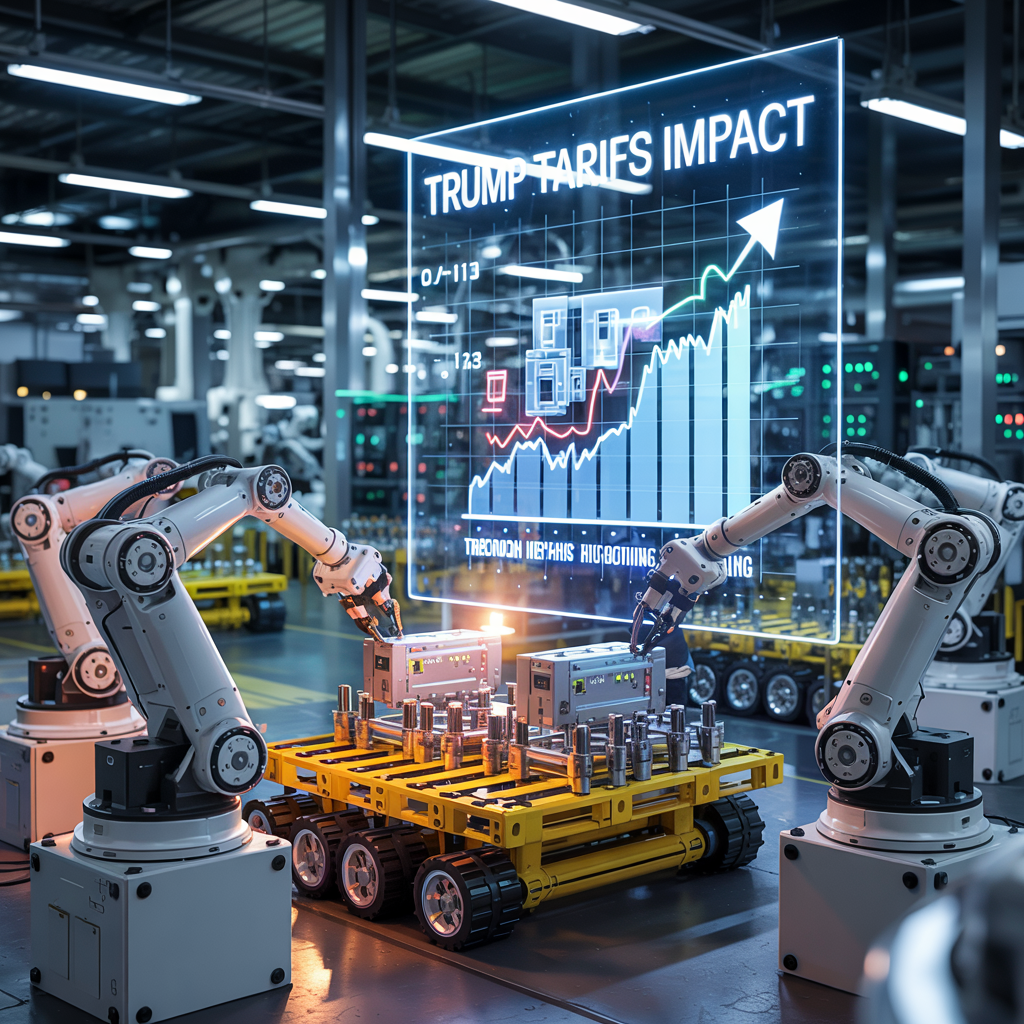The manufacturing landscape has been undergoing a significant transformation, largely driven by the adoption of artificial intelligence (AI) technologies. From predictive maintenance to automated quality checks and smart robotics, AI is reshaping factory floors and streamlining production processes. However, the political and economic environment—particularly the tariffs imposed during the Trump administration—has introduced new challenges and considerations for manufacturers embracing AI.
The Trade War and Its Ripple Effects
One of the most defining economic moves of the Trump presidency was the implementation of tariffs on a wide range of imported goods, particularly from China. While the intention was to boost domestic manufacturing and reduce trade imbalances, the consequences have been complex and far-reaching. For manufacturers relying on AI technologies—many of which are deeply embedded in global supply chains—these tariffs have added friction, cost pressures, and uncertainty.
Key components such as sensors, semiconductors, and high-performance computing systems, essential for AI-driven automation, often originate or are assembled in countries affected by the tariffs. As a result, companies implementing AI solutions in manufacturing now face higher costs for crucial hardware. These added expenses have slowed down deployment timelines, forced businesses to reconsider sourcing strategies, and in some cases, delayed innovation altogether.

Book Your “Trump Tariff Threat Assessment” @ https://www.marketsandmarkets.com/pdfdownloadNew.asp?id=72679105
Cost Pressures and Investment Decisions
AI implementation in manufacturing is capital-intensive. When tariffs increase the cost of imported AI hardware and components, companies must decide whether to absorb the added costs or pass them along to customers. For small and mid-sized manufacturers, the higher prices have become a deterrent to adopting new AI technologies altogether.
This has created a ripple effect in the broader AI manufacturing ecosystem. Vendors, solution providers, and system integrators have had to recalibrate their business models and pricing strategies to remain competitive. Some have even shifted R&D investments toward more tariff-resilient solutions or software-heavy alternatives that reduce reliance on imported hardware.
Shifts in Supply Chains and Sourcing
To mitigate the impact of tariffs, many manufacturers have begun rethinking their supply chains. This includes reshoring critical operations to the U.S., sourcing components from alternative countries like Vietnam, India, or Mexico, and investing in domestic production capabilities. While these changes may support long-term resilience, they come with short-term disruption and cost.
Interestingly, this shift has also spurred innovation. As companies adapt to new sourcing and logistical realities, there is a growing interest in developing AI models and solutions that are less reliant on foreign components. U.S.-based chipmakers and robotics firms have seen a surge in demand, prompting increased domestic production and investment in homegrown AI talent.
Opportunities Amid the Challenges
Despite the initial turbulence, the Trump tariffs may have inadvertently accelerated some positive trends. By pushing manufacturers to reduce dependency on foreign technology and streamline supply chains, a more localized, resilient AI ecosystem is emerging. Additionally, government incentives and policy support aimed at boosting U.S. manufacturing competitiveness are likely to continue under subsequent administrations.
Moreover, the increased focus on economic self-reliance has sparked discussions around ethical AI, data sovereignty, and national security—topics that were previously sidelined in the race for technological advancement.
Looking Ahead
The long-term impact of Trump’s tariffs on AI in manufacturing is still unfolding. While they have undoubtedly created barriers, they have also acted as a catalyst for strategic reevaluation and innovation. As manufacturers adapt, the future of AI in manufacturing will likely be more balanced, with a focus on resilient supply chains, smarter sourcing decisions, and a renewed emphasis on domestic technological leadership.
In the end, Trump’s tariffs have done more than just alter trade dynamics—they have reshaped how the U.S. manufacturing sector approaches the integration of AI, driving both caution and creativity in equal measure.